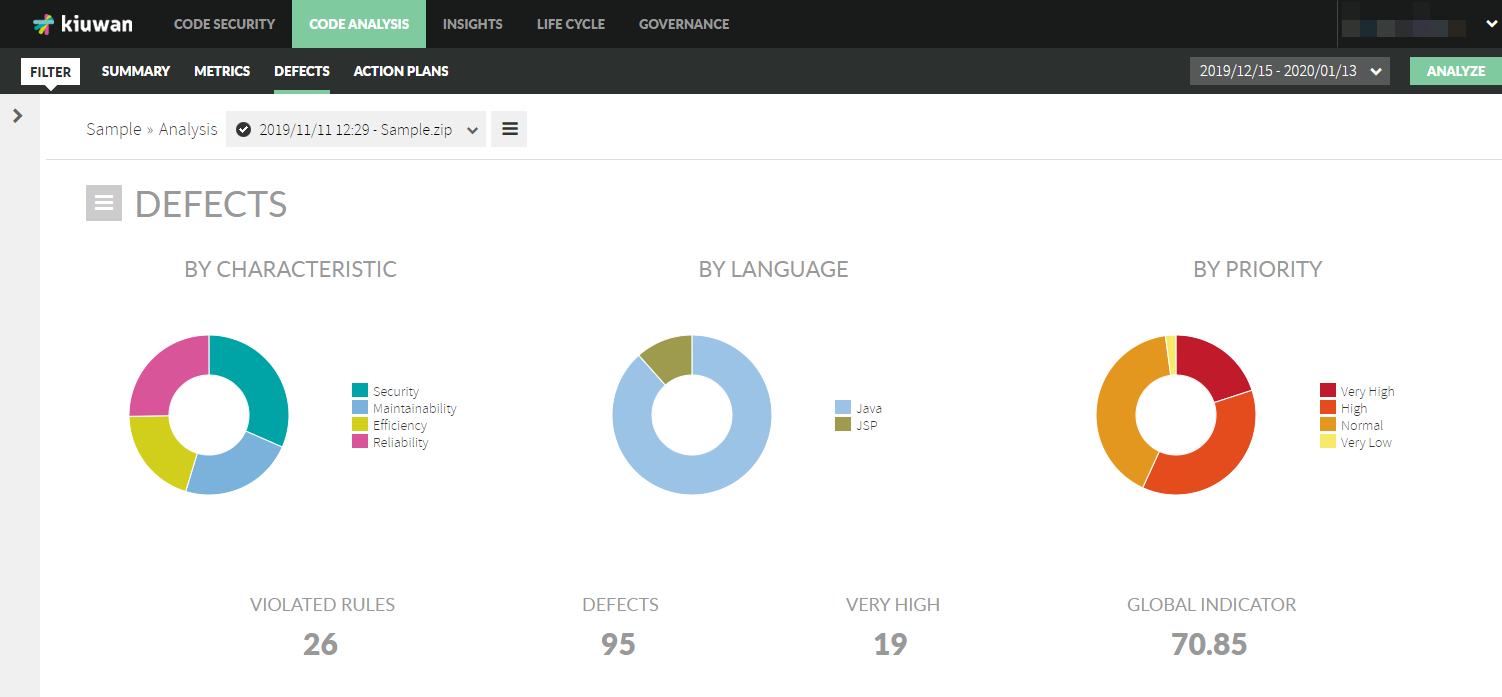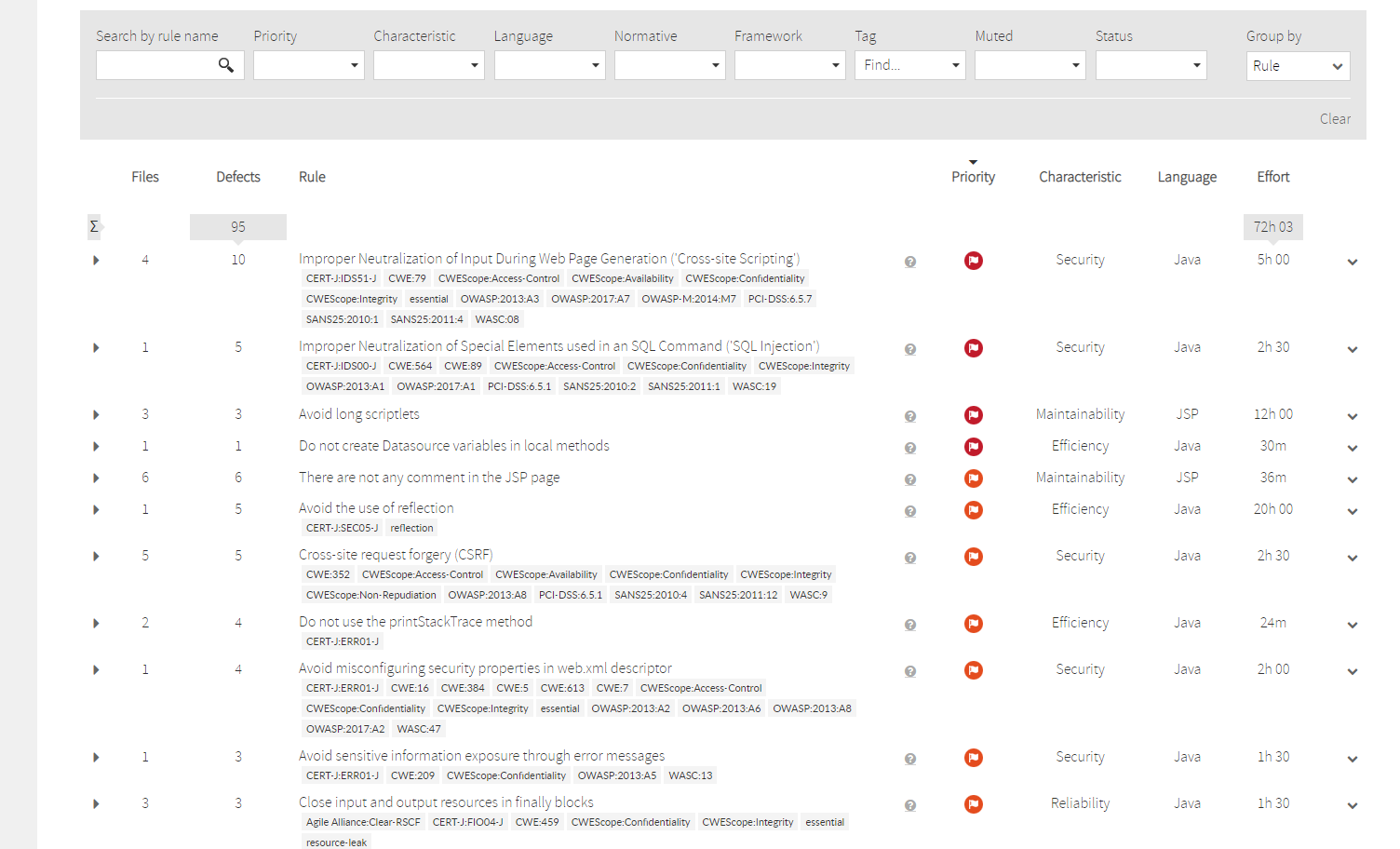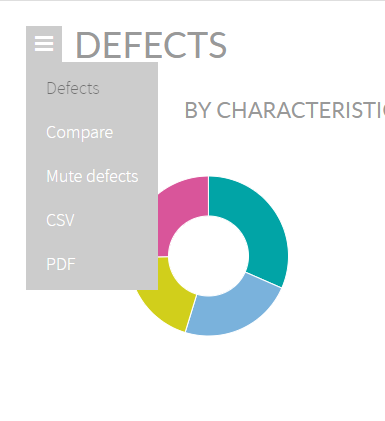Versions Compared
Key
- This line was added.
- This line was removed.
- Formatting was changed.
This page will explain the Defects section in Code Analysis into detail.
Contents:
| Table of Contents |
|---|
Introduction
Every time the Kiuwan Code Analyzer detects a violation of any of the activated rules of the quality model, it generates a defect.
Kiuwan marks the exact location (file/line) in which these defects occur and, at the conclusion of the analysis, shows them in table form in the Defects page.
You can choose how Kiuwan shows the defects, grouped either by rule or by file. Where it shows:
Main indicators
- Defect distribution graphic by the characteristics in the software Quality Model.
- Defect distribution graphic, for each of the technologies present in the application.
- Defect distribution graphic, by priority.
- Key defects indicators: #violated rules, #defects detected, #critical defects, and the Global Indicator.

Defects Table
Defects can be seen at rule, application, defect, and line of code level.

Each row of the defect table shows a defect and it associated violated rule.
The table can be filtered as follows:
| Name | Description |
|---|---|
| Search by rule name | Search by the name of the rule |
| Priority | The importance given to this rule in the Quality Model. |
| Characteristic | One of the five Quality Model characteristics, which has been associated with the rule. |
| Language | The technology that has breached the rule. |
| Normative | The normative that the rule come from (CWE, PCI-DSS...) |
| Framework | The framework the defect is in. |
| Tag | The tags given to the defect. |
| Muted | |
| Status | |
| Group by |
- Files: number of files in which rule violations were detected.
- Defects: number of times it has detected a violation of the rule in all scanned files.
- Rule: title of the rule —the details of the rule can be seen in the "Quality Models" functionality, in the Kiuwan Administration Menu—.
- Priority: the importance given in the Quality Model to this rule.
- Characteristic: one of the five Quality Model characteristics, which has been associated with the rule.
- Language: technology that has breached the rule.
- Effort: estimated effort that an average developer would spend to correct a detected failure. This time is the result of multiplying the estimated effort to correct one violation by the number displayed in "Defects".
The content of the Defects table can be exported to an excel table, with the option in the header line where is located the "bread crumb".
The content of the Defects table can be sorted by any column, and the four columns on the right have the ability to "filter" the contents of the table.
Clicking on any of the fields of a table row, Kiuwan shows one row for each occurrence of the violation of this rule, indicating the row in the file where it is detected.
Duplicated code defects
For each language, Kiuwan has three rules that detect similar —duplicate— code blocks:
- A rule for small blocks,
- another for medium ones, and
- another for large blocks.
The following screen shows an example of violation of these rules: Image Removed
Image Removed
Defects list
| If the rule is muted or not. | |
| Status | If the defect is in review or not. |
| Group by | Group by rule or file. |
Export defects
Open the drop-down menu next to the Defects title to export the contents of this table in CSV or PDF format.
 Image Added
Image Added
In xsl format.
This is a list in excel format, containing all violations found, with violated rule data and the file and line where it occurs.